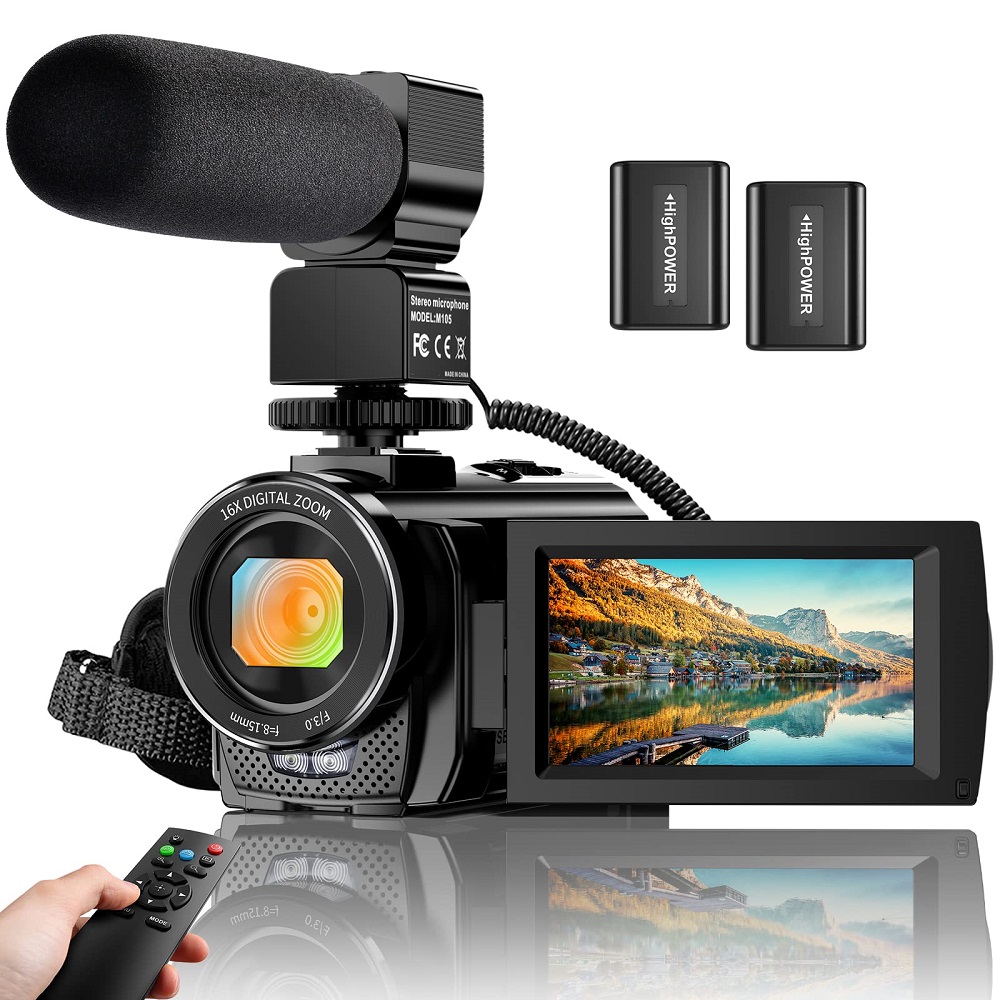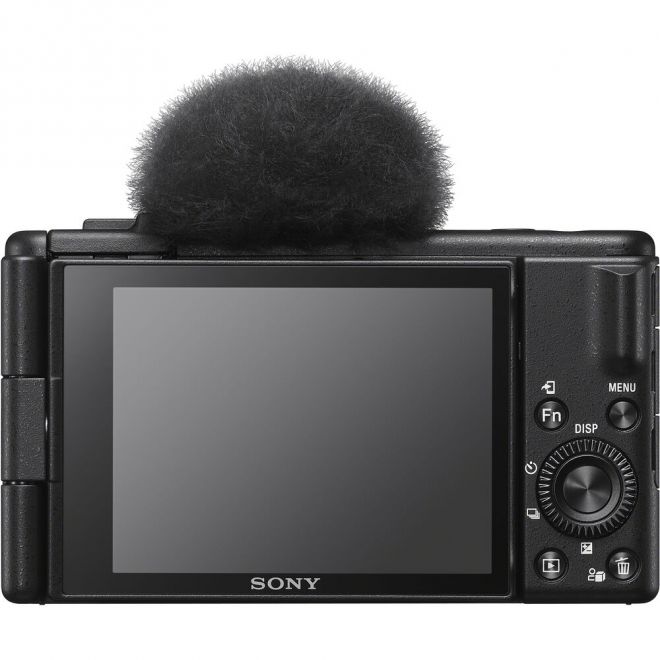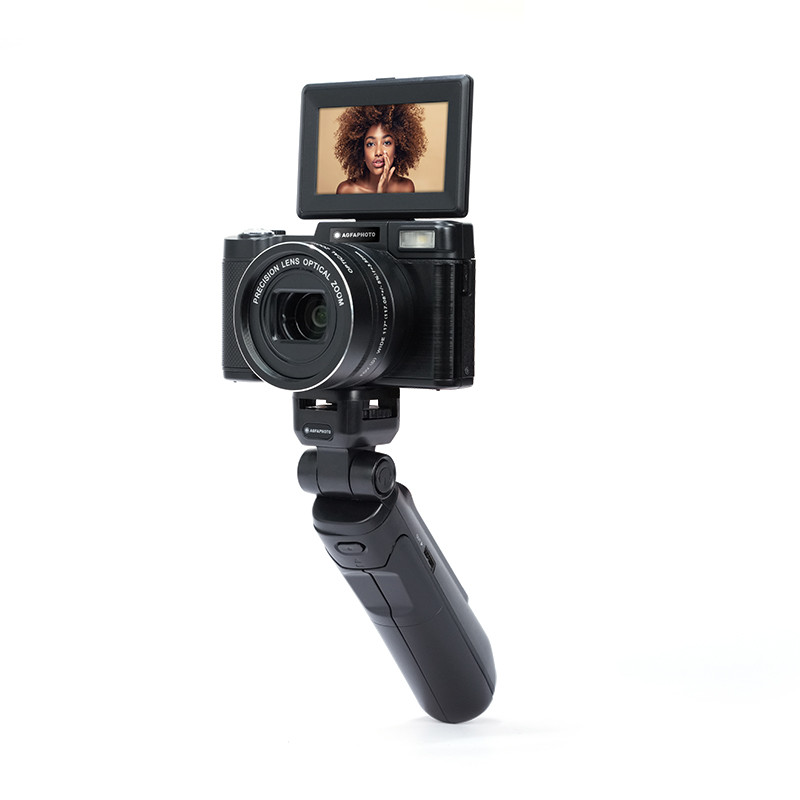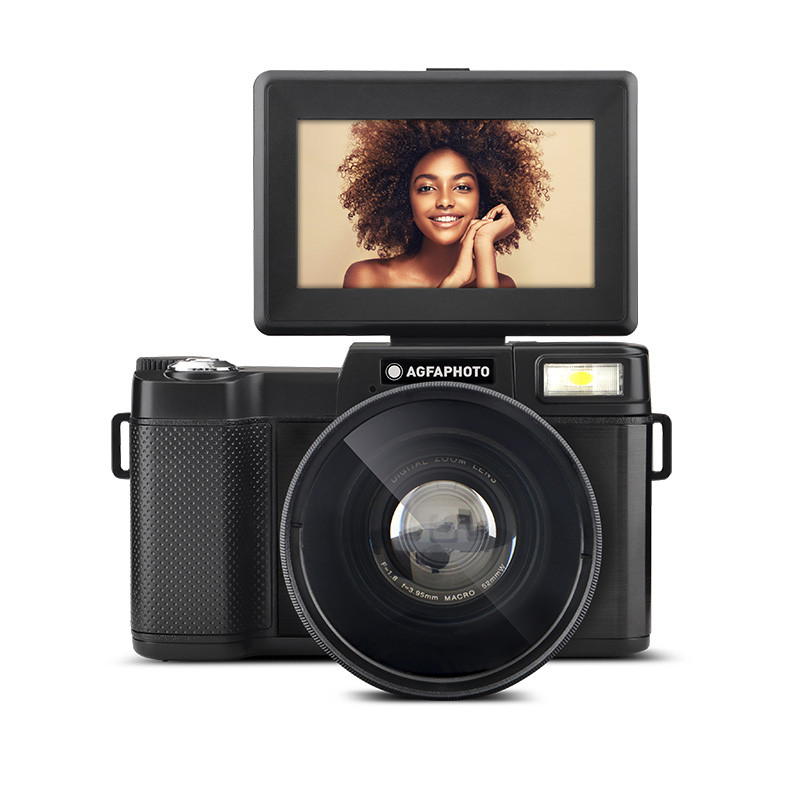Introduction to Vlogging Camera
Vlogging cameras are essential tools for content creators. They help capture high-quality video for various platforms like YouTube, Instagram, and TikTok. The right vlogging camera can enhance video quality and make content more engaging.
Key Features to Consider in a Vlogging Camera
When choosing a vlogging camera, several features are crucial:
- Image Quality: Look for cameras that offer high resolution and good low-light performance.
- Audio Quality: Good built-in microphones or support for external mics are important.
- Stabilization: Image stabilization helps keep footage smooth when you’re moving.
- Flip Screen: A screen that flips can help you see yourself while recording.
- Battery Life: Longer battery life is beneficial for uninterrupted recording sessions.
- Autofocus: Fast and reliable autofocus ensures your videos always stay sharp.
Each feature directly affects the quality of vlogs and ease of recording. Choose a camera that matches your specific vlogging needs.

Top Picks for Vlogging Cameras
Finding the right vlogging camera can boost your content creation game. Let’s dive into some top choices.
Sony ZV-E10 II: Best Overall
The Sony ZV-E10 II is a hit for vlogging. It has a 26-megapixel sensor and shoots 4K video. Its S-Log3 capability gives flexibility in post-production. Plus, the screen flips out for easy self-recording. Drawbacks include a dim screen in sunlight and a micro HDMI port. Yet, its features offer great value for vloggers.
Insta360 X4: Best for Flexibility
Insta360 X4 stands out with its 360-degree video feature. You can shoot in all directions, which is perfect for unique angles. It’s tough, sealed against the weather, and works well in different conditions. Editing its 360 video needs some learning, but the results are worth it.
Sony ZV1 II: Best for Ease of Use
Sony ZV1 II is ideal for those upgrading from phone to camera vlogging. It’s compact, user-friendly, and shoots 4K. Though it lacks image stabilization, its fast autofocus and 20-megapixel sensor make it a solid choice.
Canon R50: Best for Hybrid Shooters
The Canon R50 is great for both video and photos. It shoots 4K video with its 24-megapixel APS-C sensor. Slow motion in HD and a viewfinder are other pluses. However, it doesn’t offer 4K at 60fps, and the grip is a bit small.
Canon Powershot V10: Best for Beginners
Canon Powershot V10 is for vlogging newbies. This camera looks like a flip phone and is easy to handle. Its dual-hinged screen works as a kickstand. It has video stabilization, strong autofocus, and shoots 4K. Yet, its small size and fixed lens may not suit everyone.
Choose a camera that feels right and fits your needs. Whether it’s top video quality or user-friendliness, these options cover a range of vlogging styles.
Understanding Camera Technology
Understanding the technology behind vlogging camera can help you make an informed decision.
Image Sensors and Video Quality
Image sensors are critical to video quality. Larger sensors capture more light and detail. High megapixel counts are not always necessary. What matters is the sensor size and processing capabilities. For high-quality vlogs, choose cameras with larger sensors like APS-C or full-frame. These provide better performance, especially in low light.
The Importance of Image Stabilization
Steady footage is key to professional-looking videos. Image stabilization technology counteracts hand movements. Look for cameras with built-in stabilization for smoother shots. This feature is especially helpful when you’re moving while filming. Some cameras offer digital stabilization, which can crop the image slightly but still provides a steadier result.

Additional Features for Advanced Vlogging
When elevating your vlogging setup, certain features can significantly enhance your efficiency and quality. These advanced features not only streamline the process but also boost the production value of your content.
Connectivity Options: HDMI and USB ports
Modern vlogging cameras offer various connectivity options that are essential for a versatile shooting experience. HDMI and USB ports are particularly important.
- HDMI ports allow you to connect your camera directly to an external recorder or monitor. This is crucial for vloggers who need to view their footage in real-time to ensure it meets their quality standards.
- USB ports are useful for transferring data quickly from your camera to your computer or for streaming. They also allow for charging the camera while shooting, which is extremely handy during longer recording sessions.
Adjustable LCDs for Better Framing
An adjustable LCD screen is a game-changer for vloggers. It ensures you can monitor yourself while filming, which is essential for maintaining framing and engaging directly with your audience.
- Flipping LCDs allow for a great deal of flexibility, enabling you to shoot from various angles without losing sight of the frame.
- Touchscreen capabilities often accompany adjustable LCDs, provide quicker and more intuitive control over the camera’s settings, making adjustments a breeze even while recording.
By incorporating these advanced features in your vlogging arsenal, you assert greater control over your video’s look and feel, ensuring top-quality content delivery with ease.
Accessories for Vlogging Cameras
Having the right accessories can greatly improve the quality and efficiency of your vlogs. Let’s look at some essential additions that can take your vlogging to the next level.
Essential Accessories for Every Vlogger
When it comes to vlogging, there are a few key accessories that every content creator should consider:
- Tripods and Stabilizers: To keep your footage steady and professional-looking.
- Extra Batteries and Chargers: For long shooting sessions without interruptions.
- Memory Cards: With ample storage and fast read/write speeds, they are crucial.
- Camera Bags and Cases: To protect your gear during transport.
- Lighting Equipment: For a well-lit scene, even in poor lighting conditions.
These accessories can help to ensure a smoother shooting experience and improve the overall quality of your vlogs.
Enhancing Audio Quality with External Microphones
Good audio is as important as good video quality. To enhance the sound of your vlogs, consider investing in an external microphone:
- Lavalier Microphones: Compact and perfect for clear voice recording.
- Shotgun Microphones: Ideal for directional audio capture, reducing ambient noise.
- Condenser Microphones: Best for sit-down interview formats or voice-overs.
With these microphones, you can capture crisp and clear audio that will engage your audience and complement your high-quality video content.

Choosing the Right Vlogging Camera
Choosing the right vlogging camera involves assessing different factors specific to your needs. These considerations ensure you invest in equipment that elevates your content effectively while fitting your unique use case and budget.
Factors to Consider based on Use Case
When selecting a vlogging camera, think about how you plan to use it:
- Portability: If you move a lot while recording, a compact and lightweight camera is ideal.
- Environment: For outdoor shoots, consider a camera with weatherproof features.
- Type of Content: Do you need 360-degree shots or high action capture? Cameras vary widely in these features.
- Audio: If you record a lot of dialog, ensure your camera supports quality external mics.
By knowing your primary use case, you can match a camera’s capabilities to your specific requirements, ensuring you get the features you truly need.
Budget Considerations for Vlogging Cameras
Budget is a critical factor in choosing a vlogging camera:
- Entry-Level: You can find decent cameras at a lower cost, but these may have basic features.
- Mid-Range: These cameras offer better performance and additional features that are worth the investment if your budget allows.
- High-End: High-end cameras provide top-notch video quality and advanced features, ideal for professional vloggers.
Setting a budget before shopping helps you narrow down options and find the best vlogging camera within your price range. Consider investing more if you expect to expand your content quality or if vlogging is a significant part of your income.”
Conclusion
As we wrap up our discussion on vlogging cameras, it’s clear the right equipment is crucial. The Sony ZV-E10 II, Insta360 X4, Sony ZV1 II, Canon R50, and Canon Powershot V10 each serve unique needs and styles. Whether it’s top-notch video quality or user-friendliness, there’s a camera on this list for every vlogger.
Summary of Recommended Vlogging Cameras
- Sony ZV-E10 II is the best overall pick for its high-quality video and advanced features like S-Log3.
- Insta360 X4 offers exceptional flexibility with its 360-degree video capability and robust build quality.
- For ease of use, the Sony ZV1 II is ideal, with its simple interface and compact design.
- The Canon R50 strikes a balance for hybrid shooters, blending 4K video recording with quality photography functions.
- Beginners should look to the Canon Powershot V10 for its user-friendly format and smartphone-like handling.
Each camera is tailored to improve your vlogging experience. Consider the vital aspects like sensor size, stabilization, connectivity, and LCD functionality. Don’t forget about essential accessories, especially when it comes to stabilizing your shots and enhancing audio quality. Finally, align your choice with your use case and budget to make the best investment for your vlogging journey.
